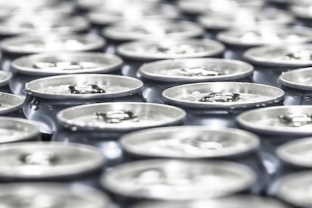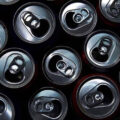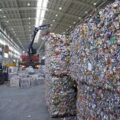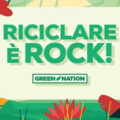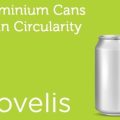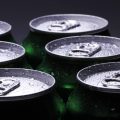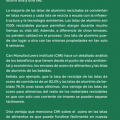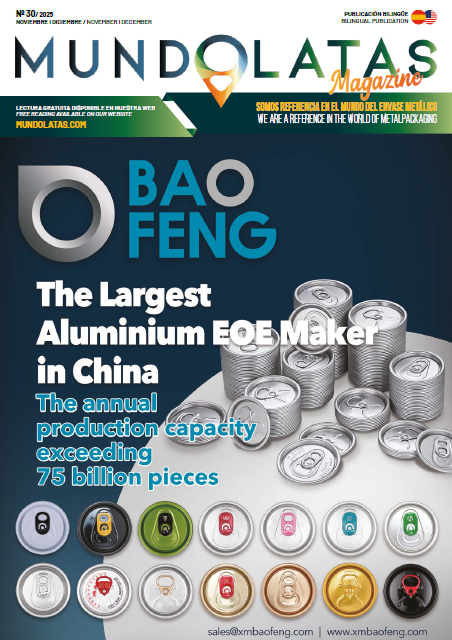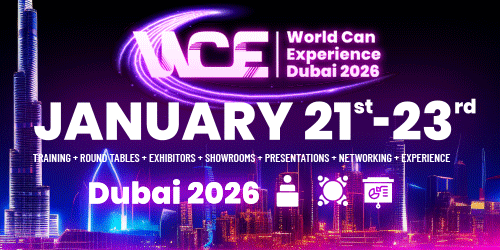Research by the International Aluminium Association has revealed that aluminum cans are the packaging with the greatest capacity to be part of a circular economy. While 70% of the material used in these cans is recycled, the percentages for glass and plastic (PET) do not exceed 40%, which is less than that obtained for cans.
The comparison also shows that with aluminum cans, a higher proportion of glass and plastic bottles end up in landfills because they are not collected. In addition, losses in the recycling system once collected are three times higher for PET plastic and glass bottles than for aluminum cans.
This is the first comprehensive study on the recycling of single-use beverage containers in five key markets. Brazil, China, Europe, Japan and the United States. The study looks at end-of-life processing losses of aluminum cans, glass bottles and plastic bottles (PET – polyethylene terephthalate), including collection, sorting, reprocessing and thermal processing, closed-loop recycling and open-loop recycling.
For example, in Europe and the United States, around 70% of aluminum cans are recycled, while in China and Japan this figure is closer to 50%. There are several reasons why recycling rates vary between markets. An important factor is the availability of collection and sorting infrastructure. In Europe and the United States, aluminum has a high scrap value, which provides an incentive for people to recycle it. In China and Japan, however, aluminum scrap is worth less, making recycling less attractive.
Aluminum cans, glass bottles and plastic bottles (PET – polyethylene terephthalate) are the most common types of beverage containers. In terms of percentage of waste recycled, aluminum cans are recycled at a rate of about 50%, glass bottles are recycled at a rate of about 30% and plastic bottles are recycled at a rate of about 10%.
As early as the 1950s, Coors Brewing Company was looking for ways to improve the taste of its beer and also find a more sustainable container than steel cans. They were the first to mass-produce aluminum cans and this study shows how their environmental goals of so many years ago are still being met today.
Ramón Arratia of Ball Corporation pointed out that “although no beverage container has fully achieved its circularity potential yet, aluminum outperforms glass and plastic (PET) at all stages of the waste management system. Currently, aluminum cans are the most recycled beverage container globally. Once collected, aluminum cans have an unmatched 90% efficiency rate in the sorting, reprocessing and re-melting processes, compared to glass (67%) and PET (66%). Based on this, aluminum can be described as the material for the circular economy. This is especially important when we consider the carbon reduction potential of recycling.”
Andrew Wood, Group Executive Strategy & Business Development of Alumina Limited noted that “the number of aluminum cans collected at the end of their useful life is approximately 18% higher than PET bottles and 28% higher than glass. A higher proportion of PET and single-use glass bottles end up in landfills or waterways because they are not collected. In an increasingly decarbonized world, this is likely to contribute to increased demand for both recycled aluminum and primary aluminum.”
Finally, Marlen Bertram, IAI Director of Scenarios and Forecasting, added: “Aluminum is one of the most recyclable materials on the planet and, given the economic and environmental benefit of the metal in the global economy, the IAI is working to ensure that end-of-life products return to the aluminum recycling cycle. Comparing recycling rates of different materials is meaningless without knowing how it is measured and into which products it is recycled. This study is the first public study to fully analyze the extent of recycling and losses of three beverage containers in different regions. By increasing accuracy in identifying where the main losses occur, the study could provide solutions to improve the recycling rate of all materials. We are definitely in a new era in circularity transparency.”

